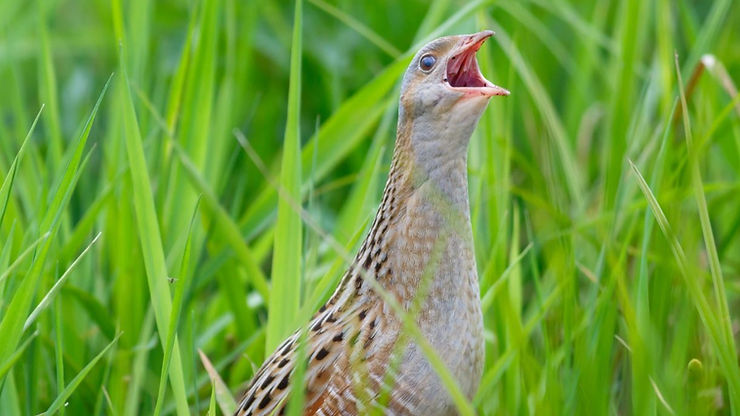By: Zhaohua Chen
In a few small areas along the western coast of Ireland, corncrake birds find the last remaining pieces of their safe haven. The secluded peninsula of Belmullet is one of these. The birds were once found in abundance throughout western Europe, but now, encounters with corncrakes are few and far between.
Conservationists and government agencies have been working with local farmers to try to preserve and hopefully increase the corncrake’s population– for more reasons than the obvious one of biodiversity. The bird’s unique “kek kek” call brings many memories back from previous generations, including warm summer nights and the joy of sifting through fresh hay.
Corncrakes mainly breed in meadows. In the 1990s, the effort to save the decreasing population of the birds started and a rule was enacted to ban the excessive or early mowing of meadows. However, it was met with the refusal of farmers who needed the meadow grass for feeding their animals and livestock.
Corncrakes find their homes in plains with long grass or nettle weed, such as areas in eastern Europe and Asia, where their numbers are still high and life is peaceful. However, they also found the same inhabitable environment in Europe– which is where they face conflict now.
Now, the journey to restoring corncrake numbers takes a turn with a state-led program, “Corncrake Life”, which provides alternatives for farmers who require meadow grass for animal feed. The organization works to preserve or even recreate the meadows that corncrakes can mate and have their children in.
Feargal Ó Cuinneagáin is a resident of Belmullet who has turned his 25 acres of grass into a massive land of stinging nettles. Why stinging nettles, out of all plants?
The director of Corncrake Life, John Carey, has an explanation for stinging nettles being grown: “For generations, farmers have been told that nettles are weeds. They’re dirty. Get rid of them. They’re a hard sell for farmers, but they are really good cover for corncrakes.”
With an initial budget of around six million euros, Corncrake Life was started in early February 2021 by a group of around fifty farmers in the areas of Donegal, Galway, and Mayo.
Using artificial fertilizer opened up the chances for farmers in the area to start mowing their fields earlier in the year, which interrupted the corncrake’s breeding cycle. Belmullet, along with other, more remote areas along the coast still remained as a safe base for the birds, due to their poor land and wetter climate. These conditions allowed the rapid introduction of artificial fertilizers to take longer to reach those places.
Farmers receive 304 euros per acre that they grow nettle weed. They aren’t paid for the corncrake itself; they’re paid for the simple act of helping, even if it’s just a bit. Carey remarks, “The greatest value of this land isn’t in food production, it’s in public goods and services– clean water, wildlife diversity, carbon sequestration. It’s time we started paying for that.”
Though the corncrake possessed a natural disadvantage in its European home, conservation efforts from loyal citizens who retain memories that the bird brought gently steadily pushed it along. As the director of Fota Wildlife Park where 11 corncrake eggs are to be hatched, Sean McKeown, says: “It’s part of history. It’s in their memory. The good old days, when they were young.” We can hope for a future where the birds’ safe haven is expansive once more.
Sources: https://s3.amazonaws.com/appforest_uf/f1659884014056x158054312237690940/Irish%20Farmers%20Help%20Save%20a%20Bird%20Whose%20Calls%20Used%20to%20Herald%20Summer%20-%20The%20New%20York%20Times.pdf











